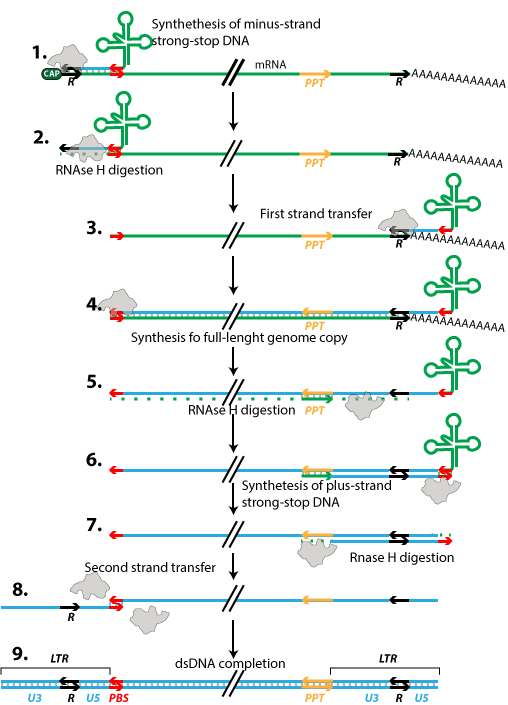ssRNA(RT) replication/transcription
Related to: All retroviridae and retro-transposons
Location: Host cell cytoplasm after virion entry.
Replication events:
The unspliced genomic RNA is incorporated in the virions and reverse transcribed into dsDNA after virion entry in host cytoplasm:


